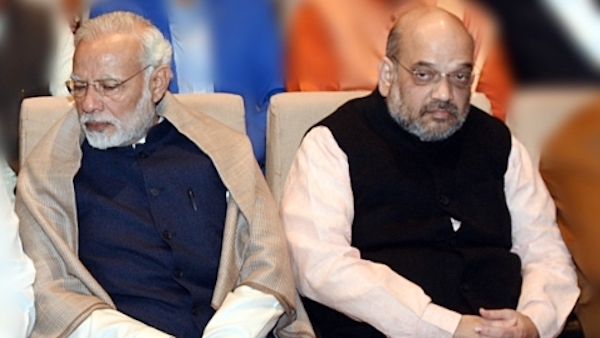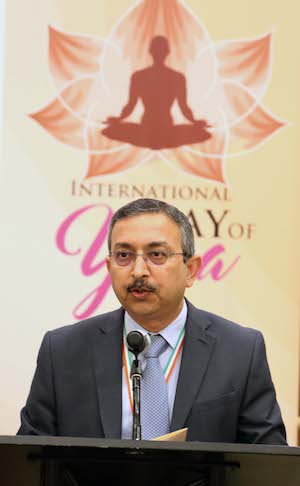
The January 2019 MOTN predicts that if an election were held now, the NDA tally would drop by 100 seats from the 336 seats it got in the 2014 election. The BJP would be the single largest loser in the alliance with the number of seats dropping as much as 80 from 282 in 2014 to 202 now.

I wrote on December 19, 2018 that the next general election in India may result in a hung parliament. As things stand today, one can predict no party will be able to win a majority. A hung Parliament looks imminent as both the ruling NDA and challenger UPA fail to reach the majority mark of 272 by a distance. The NDA remains the biggest political alliance, with the BJP emerging as the single largest party. This is the stunning conclusion of the India Today Group-Karvy Insights biannual Mood of the Nation (MOTN) survey conducted between December 28, 2018, and January 8, 2019. This MOTN is significant as it comes barely four months before the general election.
It must be pointed out that it is the first time since Modi came to power in May 2014 that an MOTN poll is predicting that the NDA will not cross the majority mark. It confirms the declining trend in its fortunes that these surveys have recorded in the past two years with the NDA and the BJP progressively losing ground.
The January 2019 MOTN predicts that if an election were held now, the NDA tally would drop by 100 seats from the 336 seats it got in the 2014 election. The BJP would be the single largest loser in the alliance with the number of seats dropping as much as 80 from 282 in 2014 to 202 now. In such an eventuality, the NDA would have to scout for other partners to garner a majority and there could also be doubts about Modi emerging as the consensus candidate to head the coalition government.
While the opposition may rejoice at having put the NDA and Modi on the mat, the survey also reveals that neither the Congress-led UPA nor any other Opposition alliance will be in a position to form the government on their own. The UPA is likely to multiply its tally by three times, according to this survey, from 59 in 2014 to 166. That is still 106 shy of a majority. And the rest of the opposition, that includes the Samajwadi Party, Bahujan Samaj Party, the AIDMK (Tamil Nadu) and dozen others, will get the remaining.
For many voters, such a fractured mandate and the political uncertainty it spells is a disconcerting scenario. That is why Modi and the BJP have been hammering home the need for voters to give them a full majority or, as they warn, the country could be plunged into chaos.
THE SINGLE BIGGEST FAILURE OF MODI IS HIS INABILITY TO CREATE ADEQUATE NUMBER OF JOBS.
Lack of jobs rank 34%; Rising prices 20%; Demonetization 14%; Farm Subsidies 7%; Ineffective Implementation of GST 7%; Agrarian distress 5%; and Crisis in the CBI 2%.
THE VOTERS WILL BE ASKING: “Is India better off today than 5 years ago?”
- Failure of Prime Minister Modi to create 10 million new jobs per year has changed the public opinion against his government.Modi could have done what the Congress failed to do, that is to emulate China. Modi failed to liberalize India’s economy to attract sizeable foreign private investment. Modi could have built modern infrastructure and built large scale factories to produce consumer and industrial goods for export. President Trump, after winning the election offered India “closest ally” status on a par with the U.K. India has a comparative advantage over China and if India had the capability and the capacity to produce consumer goods, the US was ready to replace China. Failure of Modi to embrace President Trump’s offer may cost him in the coming election.
- Modi by overemphasizing Hindutva and not being fair to the minorities,has invited severe opposition of Christians, Muslims, Sikhs. In addition, 300 million Dalits are unhappy , giving a great political opportunity to the leader of BSP, Mayavati. Killing of cows and serving beef in restaurants were banned, but India is the largest exporter of beef meat in the world to the tune of $5 billion.
- The Demonetization created severe hardships to the vast majority of Indians living from hand to mouth with cash economy.
- Modi failed to privatize public sector corporations.He has failed even to sell the most inefficient Air India which is running at a heavy loss.
- On his inauguration, Modi invited the heads of all neighbors, signaling development of better relations. That was just a photo opportunity. His foreign policy towards India’s neighbors failed miserably. China capitalized on the opportunity. China has almost taken over Nepal, and its influence in Sri Lanka, Maldives, Bangladesh, Sikkim, and Bhutan is a huge setback for India. Modi also failed to deal with Pakistan, which has refused to mete out justice to the terror organizations Lashkar-e-Taiba and its leaders. Though President Trump requested India to influence and help Afghanistan, Modi has nothing new to show.
- Today, the public opinion is against Modi’s government on the administration of coming elections. There have been reports of computer tampering, manipulating computers to suit the goals of BJP and other irregular methods. The public has lost confidence in Modi government in running a fair and just election.
The Achilles’ heel of Modi and the NDA, though, lies in the widespread farmer unrest, rural distress and the perceptible lack of jobs.
The UPA and the other opposition partners, especially BSP (Mayavati) are bound to push the knife deeper in o these three big issues. Large sections of people have been pushed to the margins by a series of blows dealt to the economy, including demonetization and GST. This will determine the course of the coming election.
If Rahul Gandhi and his party have surged ahead in the ratings, it is because he has successfully mobilized public opinion on these issues. The recent wins of Congress in the Hindi heartland states of Rajasthan, Madhya Pradesh and Chhattisgarh are an indication of the traction Rahul has been able to get. But the Congress President will not be able to win by just running down Modi’s performance. He will also need to come out with a convincing enough vision of how he plans to put the nation on a high grown path, apart from maintaining peace and harmony.
U.P. being the largest State with 80 parliamentary seats, is surely more important than other States. Mayavati has already formed coalition with Samajwadi Party. Thus, this coalition should be able to challenge Modi’s B.J.P. The Congress and the Muslims are also challenging Modi. The result may be shocking on for . BJP which may have to to accept a very small number of seats from U.P.
I am getting the impression that almost all parties are opposed to Modi except BJP ruled states. West Bengal with the leadership of Mamata Banerjee; Tamil Nadu; Karnataka; Kerala; Andhra Pradesh and other States could mount a formidable opposition to Modi.
In a hung Parliament, the President will be forced to accept any leader who can attract enough coalitions to create a majority. Although Modi may try, he has severe competition from Mayavati and other non-Congress leaders. The big question between now and the general election is : can Modi do anything to turnaround the precarious situation he is in?
(The author is a Senior Adviser to Imaagindia Institute, a think tank in New Delhi. He lives in Scarsdale, New York. He can be reached at vpwaren@gmail.com)





Be the first to comment